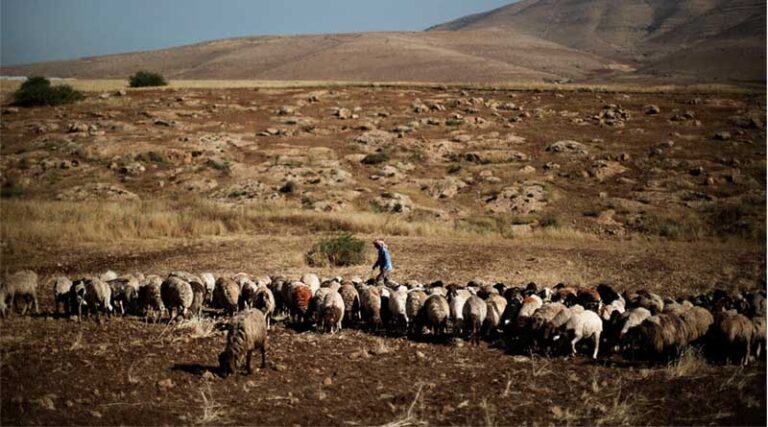
FAO Report: World Nears One-Quarter of SDG Targets, But Half Remain Moderately Distant
25 September 2025, Rome: The Food and Agriculture Organization of the United Nations (FAO) today released a new report assessing progress on 22 indicators under the Organization’s custodianship spanning six Sustainable Development Goals (SDGs): SDGs 2 (Zero Hunger), 5 (Gender Equality), 6 (Clean Water and Sanitation), 12 (Responsible Consumption and Production), 14 (Life Below Water), and 15 (life on Land).
The indicators include the new measure on Minimum Dietary Diversity for Women, approved as a new SDG indicator under FAO custodianship by the UN Statistical Commission earlier this year.
According to the report, the world is close to achieving one-quarter of the relevant targets, while another quarter remains far or very far from completion. For the remaining half, countries in general are moderately positioned to meet them.
The report benefits from the highest availability of data on the food and agriculture-related SDG indicators to date, which reached 65 percent in 2025, up from 62 percent in 2023 and only 32 percent in 2017.
“We need to redouble our efforts to achieve food security, improved nutrition and sustainable agriculture, while ensuring the sustainability of our natural resource base. This report sheds light on which objectives and which regions have achieved the most progress and which have seen a deterioration, and can therefore serve as a guide for galvanizing efforts on those areas lagging furthest behind,” said José Rosero Moncayo, FAO Chief Statistician.
Highlights of the report:
Global food insecurity remains far above 2015 levels: about 28 percent of the global population – nearly 2.3 billion people – were moderately or severely food insecure in 2024 compared to 21.4 percent (1.6 billion) in 2015. Meanwhile, an estimated 8.2 percent of the global population may have faced hunger in 2024. From a progress assessment lens, the world is far from the target, whereas it has also registered deterioration since 2015.
Globally, between 2019 and 2023, only 65 percent of women of childbearing age achievedminimum dietary diversity (MDD-W), with sub-Saharan Africa and Central Asia and Southern Asia lagging. From a progress assessment lens, the world is at a moderate distance to the target, whereas it has registered deterioration since 2015.
Despite a modest decline in 2023, the incidence of food price anomalies remains three times higher than the 2015–2019 average due to ongoing geopolitical tensions and weather-related disruptions. From a progress assessment lens, the world is very far from the target, with deteriorating trend since 2015.
In low- and middle-income countries, small-scale food producers earn less than half of what their non-small-scale counterparts make, with annual agricultural incomes often below USD 1 500 (constant PPP 2017).
Women face significant disparities in land ownership; in nearly 80 percent of surveyed countries, less than half of women have secure land rights, and men are often at least twice as likely to own land.
The world is at a moderate distance to achieving productive and sustainable agriculture, while also having registered slight improvement towards achieving productive and sustainable agriculture since 2015.
The number of animal genetic resources secured in conservation facilities has increased. However, only 4.6 percent of local breeds and 17.2 percent of transboundary breeds are kept with sufficient material to reconstitute the breed in case of extinction.
The global trend in water-use efficiency (WUE) has shown significant improvement, with a 23 percent increase between 2015 and 2022, mainly driven by economic growth.
Water stress worldwide has remained relatively stable, at 18 percent as of 2022. However, a closer examination at the regional level reveals a more concerning picture, with Western Asia and Northern Africa grappling with severe water scarcity.
There is a growing trend towards the adoption of international instruments combatting illegal, unreported and unregulated fishing. Nonetheless, the concrete impacts of these measures are slow to emerge, as the proportion of global fish stocks within biologically sustainable levels continued to decrease, dropping to 62.5 percent in 2021, down from 90 percent in 1974.
While the world’s forest area continues to diminish, falling from 31.9 percent in 2000 to 31.2 percent in 2020, the rate of decline has slowed compared to previous decades. Despite progress in sustainable forest management, the rate of forest loss remains high, mainly because of the expansion of agriculture for crop and livestock production.
Also Read: Two Rows of Grapes, Two Different Futures: How Biostimulants Are Reshaping Farming
📢 If You’re in Agriculture, Make Sure the Right People Hear Your Story.
From product launches to strategic announcements, Global Agriculture offers unmatched visibility across international agri-business markets. Connect with us at pr@global-agriculture.com to explore editorial and advertising opportunities that reach the right audience, worldwide.






